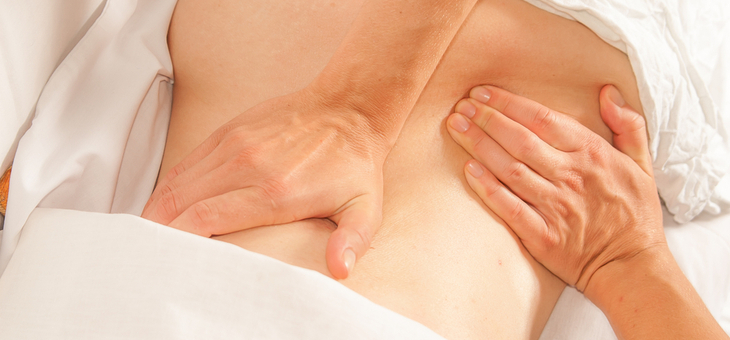Chronic pain – pain that doesn’t go away after an injury or illness has been resolved and which lasts at least three months – is one of Australia’s fastest growing medical conditions, affecting more than 3.2 million Australians.
Massage and myotherapy are powerful tools that can improve quality of life for anyone suffering chronic pain and, says sector specialist Andrew Gallagher, can be especially effective in palliative care.
Mr Gallagher, a qualified remedial massage therapist and physiotherapist, who is also president of Massage and Myotherapy Australia, says both therapies have a legitimate and complementary role to play in alleviating pain and stress.
“While massage is not a cure and does not claim to be one, palliative care researchers and cancer patients are telling us that massage therapy does meet their needs.”
He says that although medical science is yet to fully understand how massage works, the evidence coming out of clinical settings is clear – palliative care-based massage is known to be a useful tool for improving symptom management and reducing suffering.
A review of 64 research papers explored the extent to which massage therapies could reduce the pain, anxiety and depression experienced by cancer patients in palliative care.
The reviewers found that massage therapy was a cost-efficient and non-invasive intervention that had a positive affect on seriously ill cancer patients. Mr Gallagher explains:
- In four studies, the amount of pain reduction reached a statistically significant value in the short term.
- Two studies found that while the decrease in the consumption of analgesics was not statistically significant, the dosage of analgesics was subject to less fluctuation.
- Four studies found physiological relaxation to be closely connected with the immediate reduction of anxiety, and they also found it to be important for a lasting effect.
- Two studies provided evidence of an improvement in depressive mood through massage therapy, with one showing that a gentle touch massage or full-body massage provided for clearly better results in easing symptoms.
- Despite the different characteristics of the population, similar results with respect to reducing pain were achieved in four out of six studies.
Another 2014 study described the integration of massage therapy into a palliative care service and examined the relationship between massage and symptoms in patients with advanced illnesses. It found that massage was a useful tool for improving symptom management and reducing suffering in palliative care patients.
Palliative Care Australia says on its website: “Palliative care massage addresses the client’s symptom issues, the side effects of various treatments, and the physical, psychological, social and emotional consequences of living with a terminal illness. Massage often promotes a greater sense of connection between the mind and body complexes.”
Mr Gallagher says that a 2017 study found Australia’s complementary medicine workforce provided substantial levels of clinical care in many important areas of health. The most frequently reported massage or myotherapy specialities used were for health and wellbeing (72.7 per cent), musculoskeletal conditions (70.5 per cent) and pain management (59.6 per cent).
Mr Gallagher says the evidence suggests that improving accessibility and increasing the number of massage therapists with specialist palliative care skills and training, rather than leaving it up to palliative care patients or their carers to find a qualified professional, would have a direct impact on the quality of life of palliative care patients.
“Unfortunately, limited access is available to therapists who are accredited individually and who provide fee-for-service therapy. While this is expanding, with some large metropolitan hospitals actively establishing massage services in a hospice setting involving contractors or employed staff, the number of well-trained palliative or end-of-life care massage therapists is small, with demand often outstripping supply.
“To help palliative care patients and their carers find professional massage therapists and myotherapists in their local communities, the Massage and Myotherapy Australia directory is a good place to start.”
The website also explains the various techniques used in massage and myotherapy, and how they can best be applied.
Have you used massage or myotherapy to help ease a painful condition?
If you enjoy our content, don’t keep it to yourself. Share our free eNews with your friends and encourage them to sign up.
Related articles:
https://www.yourlifechoices.com.au/health/news/could-coffee-prevent-clogged-arteries
https://www.yourlifechoices.com.au/health/news/why-more-women-get-alzheimers
https://www.yourlifechoices.com.au/health/your-health/poor-sleep-linked-to-heart-disease

